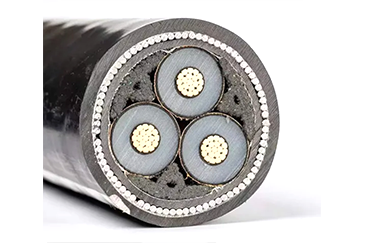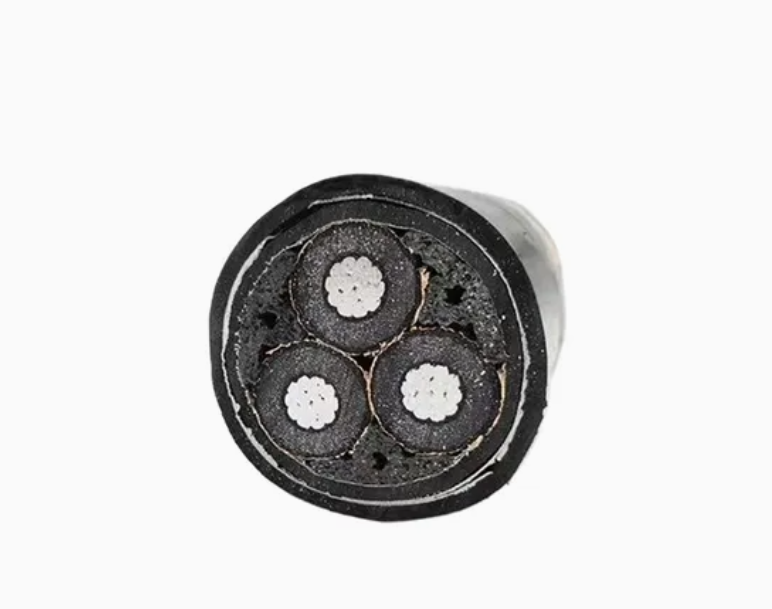The Role of 26/35kV Aluminum Power Cables in Smart Grid Technology
Time of Release:
2025-11-09
Source:
Author:
The Role of 26/35kV Aluminum Power Cables in Smart Grid Technology
Table of Contents
- 1. Introduction to Smart Grids and Power Cables
- 2. Importance of 26/35kV Aluminum Power Cables
- 3. Benefits of Using Aluminum for Power Cables
- 4. Applications of 26/35kV Aluminum Power Cables in Smart Grids
- 5. Technical Specifications of 26/35kV Aluminum Power Cables
- 6. Challenges in Implementing 26/35kV Aluminum Power Cables
- 7. Future Prospects of 26/35kV Aluminum Power Cables in Smart Grid Development
- 8. FAQs about 26/35kV Aluminum Power Cables
- 9. Conclusion
1. Introduction to Smart Grids and Power Cables
Smart grid technology represents a transformative shift in the way electricity is generated, distributed, and consumed. At the heart of this evolution lies an intricate network of components, among which **26/35kV aluminum power cables** play a crucial role. These cables are designed to carry substantial amounts of electrical power over long distances, facilitating the efficient transmission necessary for modern energy demands.
The transition to smart grids is driven by the need for improved reliability, efficiency, and sustainability in power systems. With the increasing integration of renewable energy sources, energy storage solutions, and advanced monitoring technologies, the demand for robust and efficient transmission solutions is more critical than ever.
2. Importance of 26/35kV Aluminum Power Cables
26/35kV aluminum power cables serve as a backbone for smart grid infrastructure. Their importance can be highlighted through several key aspects:
2.1 High Voltage Transmission
These cables are designed to handle medium voltage levels, making them suitable for transmitting power from substations to distribution points. Their capability to operate efficiently at these voltage levels enables long-distance transmission with minimal losses.
2.2 Enhanced Reliability
The use of aluminum in power cables contributes to enhanced reliability due to its lightweight nature and resistance to corrosion. This quality is particularly beneficial in harsh environmental conditions, ensuring that power delivery remains uninterrupted.
2.3 Cost-Effectiveness
Aluminum is more cost-effective than copper, making 26/35kV aluminum cables a preferred choice for utility companies aiming to reduce operational costs while maintaining high performance.
3. Benefits of Using Aluminum for Power Cables
The advantages of using aluminum in power cables extend beyond cost savings. Here are some notable benefits:
3.1 Lightweight and Easy to Install
Aluminum cables are significantly lighter than their copper counterparts, making them easier to handle and install. This characteristic reduces labor costs and installation time, ensuring rapid deployment of infrastructure.
3.2 Excellent Conductivity
While copper is known for its superior conductivity, aluminum cables can still provide excellent performance when designed appropriately. The lower resistivity of aluminum allows for efficient power transmission, reducing energy losses.
3.3 Corrosion Resistance
Aluminum is naturally resistant to corrosion, which enhances the longevity of power cables. This durability translates into lower maintenance costs and reduced downtime, which is essential for smart grid operations that rely on continuous energy supply.
4. Applications of 26/35kV Aluminum Power Cables in Smart Grids
The applications of 26/35kV aluminum power cables in smart grids are vast and varied. Here are some prominent uses:
4.1 Renewable Energy Integration
As renewable energy sources such as wind and solar become more prevalent, aluminum power cables facilitate the integration of these resources into the grid. They transport electricity generated from remote locations to urban centers where demand is highest.
4.2 Smart Metering Systems
Smart metering technologies require reliable power supplies for optimal performance. 26/35kV aluminum cables support the power requirements of these systems, enabling real-time data collection and monitoring.
4.3 Electric Vehicle Charging Stations
The rise of electric vehicles (EVs) has created an urgent need for efficient charging infrastructure. Aluminum power cables are essential in providing the necessary power supply to EV charging stations, ensuring that they operate effectively and support the growing number of electric vehicles.
5. Technical Specifications of 26/35kV Aluminum Power Cables
Understanding the technical specifications of 26/35kV aluminum power cables is crucial for their effective application in smart grids. Key specifications include:
5.1 Conductor Material and Size
The conductors are typically made of aluminum alloy, with specific sizing based on the intended application. Standard sizes for 26/35kV cables range from 50mm² to 400mm².
5.2 Insulation Type
The insulation material plays a vital role in ensuring safety and efficiency. Common materials include cross-linked polyethylene (XLPE) and ethylene propylene rubber (EPR), offering excellent electrical properties and thermal stability.
5.3 Sheath and Armoring
The outer sheath provides protection from environmental factors and physical damage. Some cables are armored to enhance durability, especially in underground installations.
6. Challenges in Implementing 26/35kV Aluminum Power Cables
Despite their myriad benefits, implementing 26/35kV aluminum power cables presents certain challenges:
6.1 Thermal Management
Aluminum cables must be adequately rated to handle thermal conditions, especially in high-load scenarios. Addressing thermal management involves ensuring proper cable sizing and installation techniques.
6.2 Connection Issues
Connecting aluminum cables can be more complex than copper due to differences in thermal expansion and contraction. Proper connector materials and installation practices are essential to mitigate this issue.
6.3 Market Acceptance
While aluminum cables have many advantages, some industries remain hesitant to transition from traditional copper solutions. Ongoing education and demonstration of the benefits are necessary for broader acceptance.
7. Future Prospects of 26/35kV Aluminum Power Cables in Smart Grid Development
The future of 26/35kV aluminum power cables in smart grid technology looks promising. With the increasing focus on sustainability and renewable energy:
7.1 Innovations in Cable Technology
Advancements in materials and manufacturing processes are expected to enhance the performance and reliability of aluminum power cables. Innovations such as improved insulation and conductor designs will drive efficiency.
7.2 Expansion of Smart Grids
As more regions invest in smart grid infrastructure, the demand for reliable transmission solutions like 26/35kV aluminum cables will grow. Their role in connecting decentralized energy sources will be crucial.
8. FAQs about 26/35kV Aluminum Power Cables
8.1 What exactly are 26/35kV aluminum power cables?
26/35kV aluminum power cables are medium voltage cables designed to transmit electrical power at voltage levels of 26kV to 35kV, commonly used in smart grid applications.
8.2 Why are aluminum cables preferred over copper cables?
Aluminum cables are lighter, more cost-effective, and resistant to corrosion, making them suitable for various applications, especially in outdoor and harsh environments.
8.3 Can aluminum cables compete with copper in terms of conductivity?
While copper has superior conductivity, advancements in aluminum cable design can provide comparable performance, especially when considering the application context.
8.4 How do these cables support renewable energy systems?
26/35kV aluminum power cables facilitate the integration of renewable energy sources into the grid by efficiently transmitting power from generation points to end-users.
8.5 What are the maintenance requirements for these cables?
Regular inspections are essential to ensure the integrity of the cables. However, their corrosion resistance and durability typically lead to lower maintenance requirements compared to copper cables.
9. Conclusion
In conclusion, **26/35kV aluminum power cables** are integral to the development and efficiency of smart grid technology. Their lightweight nature, cost-effectiveness, and superior performance make them an ideal choice for powering modern electrical infrastructure. As the demand for cleaner, more reliable energy solutions continues to grow, these cables will play a crucial role in shaping the future of energy distribution and management. Embracing these innovations not only enhances our current power systems but also paves the way for a sustainable energy future.
Related information

The Role of 26/35kV Aluminum Power Cables in Smart Grid Technology
The Role of 26/35kV Aluminum Power Cables in Smart Grid Technology Table of Contents 1. Introduction to Smart Grids and Power Cables 2. Importance of 26/35kV Aluminum Power Cables 3. Benefits of Using Aluminum for Power Cables 4. Applications of 26/35kV Aluminum Power Cables in Smart Grids 5. Technical Specifications of 26/35kV Aluminum Power Cables 6. Challenges in Implementing 26/35
2025-11-09


Understanding 8.7/15kV Triple Cores Aluminum Power Cable: A Comprehensive Guide
When it comes to power distribution, the choice of cable is critical to ensuring operational efficiency and safety. The 8.7/15kV triple cores aluminum power cable is specifically designed for medium voltage applications, making it a popular choice among electricians and engineers. Understanding the features and benefits of this type of cable can help you make informed decisions for your projects.
2025-11-06


Understanding the Benefits of 0.6/1kV Single Core Copper Conductor Power Cables
Understanding the Benefits of 0.6/1kV Single Core Copper Conductor Power Cables Table of Contents 1. Introduction to 0.6/1kV Single Core Copper Conductor Power Cables 2. What Are 0.6/1kV Single Core Copper Conductor Power Cables? 3. Key Advantages of 0.6/1kV Single Core Copper Conductor Power Cables 3.1 High Conductivity 3.2 Durability and Longevity
2025-10-28




